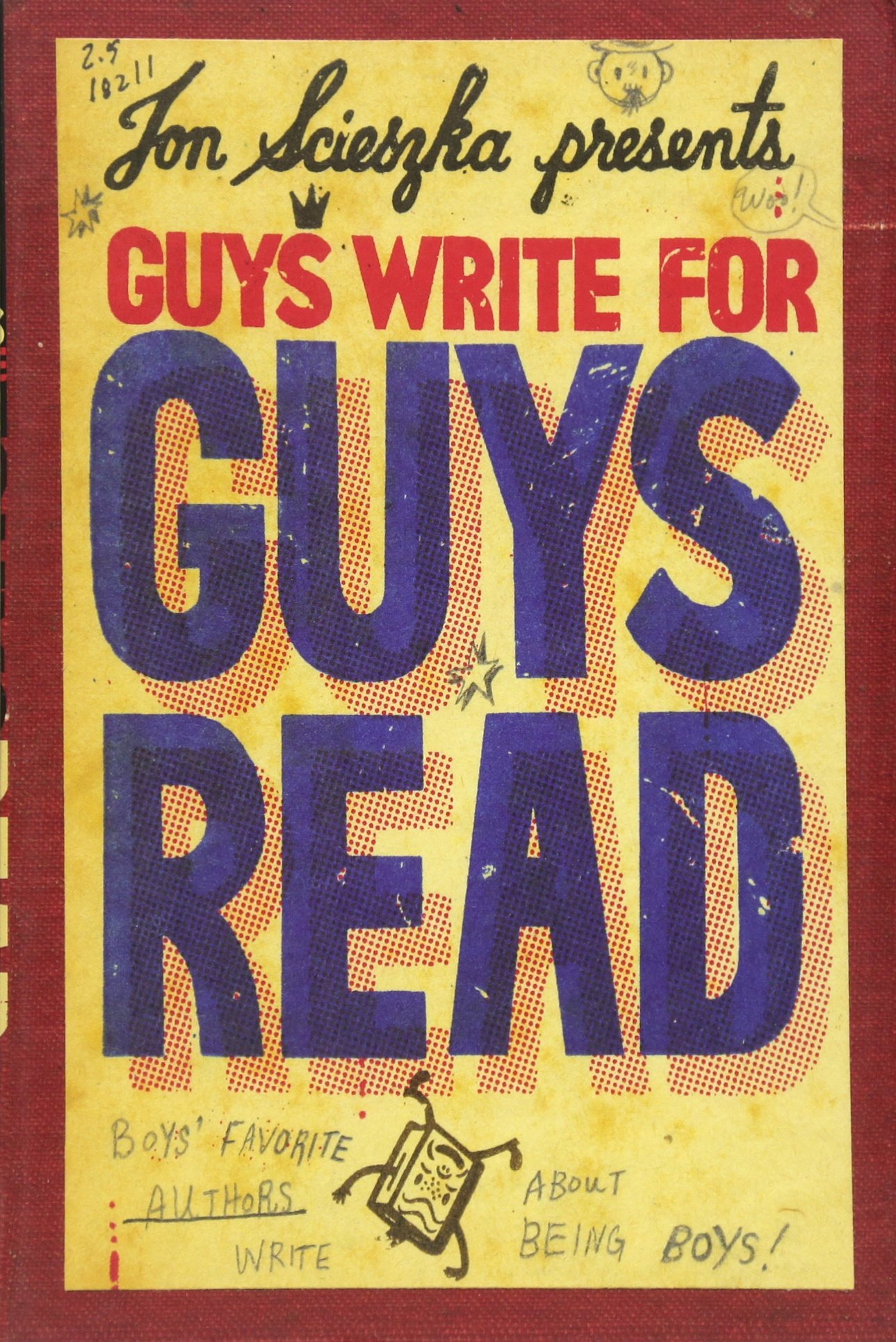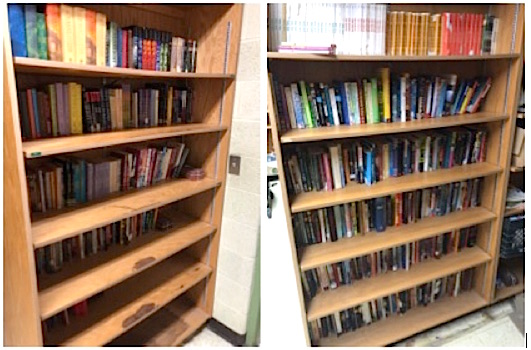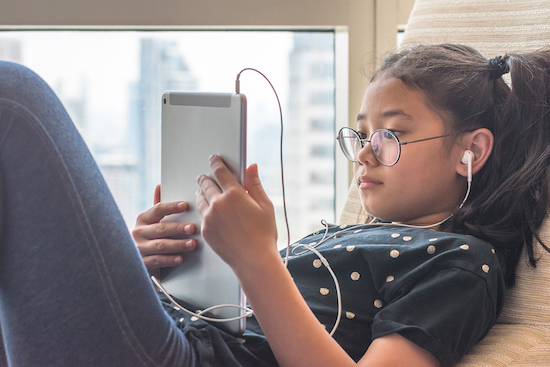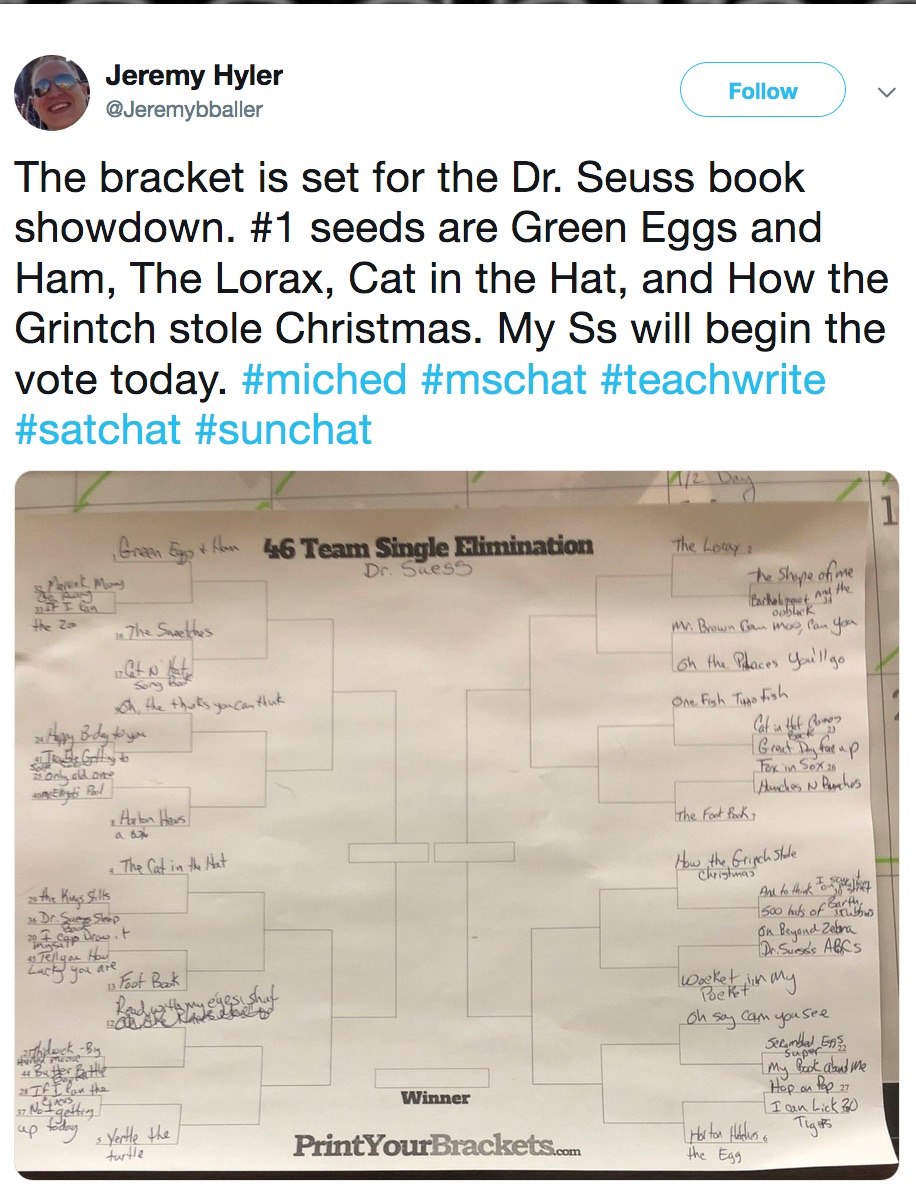Motivating Middle School Students to Read More
A MiddleWeb Blog
“Why do I need to read this?”
“I haven’t read a book since 3rd grade.”
If you’re an English teacher in the middle level today, you’ve heard students utter statements and questions like these. Probably quite often. At times, it seems almost impossible to get middle school kids to pick a book and read for enjoyment.
I have always been curious about what makes so many students despise reading so much. Some hate to admit they read at all. “Even if you’re just reading social media posts or text messages, you’re reading something,” I’ll say. I always get some skeptical looks. Where have we as educators gone wrong?
After countless discussions and short surveys of students over the past few years, I am starting to draw some conclusions on how I can better motivate my middle school students to read by offering them choices, having them conduct authentic conversations, and just giving them regular reading time.
Choose Your Own Adventure
Choice. I’m sure this is an obvious one. I know we all have our curriculum to get through and there are certain novels or texts we want our students to read. I’ll admit one of my favorite books I’ve had 8th grade students read in the past is The Outsiders by S. E. Hinton. Very few students complain about that novel despite its age (50 years old!).
Anyway, one of the ways that I implement choice in my classroom is by doing my version of literature circles, which I simply call Digital Literature Circles (more details here).
Before my students begin reading in their circles, I set out between five to seven different novels on a table. I dedicate a class period for students to “go on a date with a book.” This is where students will take the time to read the back cover and the first ten pages of each novel.
When the students have completed their rotations, I then give them a paper with the book choices on it and ask them to rank the books from 1-5 with one being their first choice. After the rankings are in, I sort them into groups based on their preferences. (Over the past four years, I have never had an issue with students not getting their first or second choice.)

1st book in Guys Read series (2008). You can find used copies for $5 or less via Amazon.
When it comes to book choices, I try to have popular books on hand, even if I do pay for them out of my own pocket. It is especially important to have some sports books for the boys to choose from. Mike Lupica is a great choice for sports books. Also, if you are looking for books for boys, you can check out the Guysread website.
It’s not a secret that by giving students some appealing choices, they take charge of their reading and their learning. They’re more likely to develop enthusiasm for a book and that often leads to more authentic conversations about the text.
Authentic Conversations (the Ones They Start Themselves)
In my opinion, lack of choice isn’t the only reason middle school students are turned off by reading. Too many time we are not having what I call “real” conversations about books. One of my biggest gripes? Teachers give students questions at the end of every chapter or hand them a book packet full of questions to answer by the time they are done with the book. It’s no wonder students don’t want to read.
Getting students to have authentic conversations about books doesn’t have to be complicated. One of the first activities I do with my students is show them a recording of adults in a book club. At first, I just have students watch the video and nothing more.

One of the first activities I do is show students a video of adults in a book club.
Then I have them get out their writer’s notebook and write down what they notice about what the adults are saying. Below is a short list of some of their most interesting observations.
- They don’t have a list of questions.
- It seems more like a conversation (one person isn’t just answering a question).
- They talk a lot about the characters.
- There is discussion about what they like and dislike.
I find it marvelous that my students notice the book club members are having a conversation – it’s not a scripted session or just answering questions that are given to them. Students also notice that the conversation is not always about literary devices, theme, or predictions for the next chapter.
They see that the adults are talking about the characters and the events in the book and how they seem realistic or not. There’s more talk about the story and how skillfully the writer pulled the reader along. By showing my students the short video, I am hoping they’ll see what an authentic conversation should look like around a book.
I open up other opportunities for students to discuss what they’re reading by taking some time during class on Tuesdays and Fridays. I let any student do a mini book talk where they simply let the class know the title and author and include some brief commentary about the plot or a character or interesting facts they’re learning. If they have some enthusiasm, I want them to share it. The talks typically don’t last more than 1-2 minutes.
In addition, I always create opportunities for my students to talk about books outside of class using the Schoology platform, which they use for their literature circles. I often post something new and interesting about books, give them a chance to respond, and see where it goes. It’s not unusual for two-thirds of the class to engage.
Another great place students can see comments about books and even get recommendations is Goodreads (here are some teaching ideas at the Goodreads site). Teachers could even set up an online space for students to do book reviews.
When I give kids different spaces to have authentic conversations about books, they get more excited about reading and don’t worry about having to answer a lot of canned questions or follow scripted discussion guidelines.
Time to Read Whatever They Want to Read
In order for students to talk about reading, they have to have time to read. I am not talking about the novels or short stories we assign. Let the students bring in their own book or magazine, or choose from a classroom library, and give them silent reading time.
I try to give my students at least 20 minutes twice a week. I allow them to move around, sit in the bean bag chairs, stretch out on the floor, or even bring in their pillow on occasion. Students need time to just simply read! While students are reading, I make sure that I am reading my book as well.
We just don’t do this free-range reading enough. Too many times there is some consequence tied to the reading that we “allow” students to do – quizzes, tests, projects, or some other form of assessment.
When my own son was in 2nd grade, his love for reading diminished substantially because his teacher wanted students to read 20 minutes every night and then write a summary EVERY day. My son lost interest. I pleaded with his teacher to give the student other options or just allow them to read for pleasure. The process never changed. Now my son is a 6th grader, and a very fluent reader, but his love for reading just isn’t there anymore.

Some of the books in our classroom library.
In addition to giving students reading time, I have been known to read out loud to my middle school students. I have chosen controversial books such as 13 Reasons Why by Jay Asher and just silly books like Wrinkles Wallace by Marquin Parks. The students really enjoy it, and often times it is a great way to get them settled into class and ready to go for the hour.
I feel this is something important to do for students, whatever age they might be. Students can improve their listening skills, and it gives students who struggle in reading a chance to listen to a book they might not otherwise pick up because it is too difficult for them to read.
I know that time is always an issue, but for me, when I’ve made the time investment, I have seen my students’ interest in reading go up and watched my students engage in conversations about books outside of the classroom. The 10 minutes I take out of class to read to my students, or the 20 minutes I give them to just read once or twice a week, lets them know how valuable I believe reading can be.
Choice, Talk, and Time
These are the areas I focus on based on feedback from my own students. Sometimes just having a conversation with students about their reading habits can go a long way as well. Talking with your students can help you understand why they’re not reading and open up that door.
Sometimes, it’s as simple as accessing books. Though teachers don’t have a lot of money, garage sales are great places to buy books for your classroom. Other activities can bring out the love for reading in your students too.
This year, during the NCAA national championship tournament, I have created a bracket with all of the Dr. Seuss books. Students are voting on who proceeds through the bracket. This has caused a buzz in my classroom as students talk about their childhood favorites and why they deserve a vote.
No matter what you do in your own classroom, remember, it starts with us, the teachers!
The more that you read,
the more things you will know.
The more that you learn,
the more places you’ll go.
— The Cat in the Hat, I Can Read with My Eyes Shut! (1978)




































Great article Jeremy! We all need new ideas to stimulate the reading conversation. Too many kids struggling, and maybe many who could benefit from a reading accommodation.
Thank you Valerie. I know what I do may not always work in everyone’s classroom, but I still want to try and help teachers anyway I can. I want to see middle school students read more every day. Thanks again and let me know how I can help in any other way.
Thanks for taking time share what works and including resources for others who’d like to implement these ideas in their classrooms, too. For others ways students can process and share what they learn, I invite you to view USING ART TO IN ELA CLASSES.
Thank you Anna for commenting on the post and the resource. I will be sure to check it out. Again, thank you for sharing and commenting.
Dr. Roseboro shares a very interesting project learning activity – featuring a work by artist Ellsworth Kelly, “Nine Colors.” Kelly will be honored this year with a stamp book from USPS. Here’s the PDF of her project/lesson plan.
Thank you! I will be sure to check this out for sure!
Yay! YAY! YAY! I love everything about this post!
Thank you, Rita! I appreciate you reading my post.
Loved your article! Thanks for sharing.
Thank you, Perla for reading my post. I appreciate your kind words.
Thanks for this, Jeremy. There are definitely a few points I could use in my classroom right after Spring break.
Thank you for reading Vanessa. I am glad I can help you out. Please don’t be afraid to reach out if you need help with anything else.
Great points Jeremy. We are trying to instill a lot of this in my school right now. This is our first year with a “free-range” reading period. So far, it’s going really well.
Thank you Jean! I appreciate you reading my column and providing comments. Let me know what I can do to help. Enjoy the rest of your school year